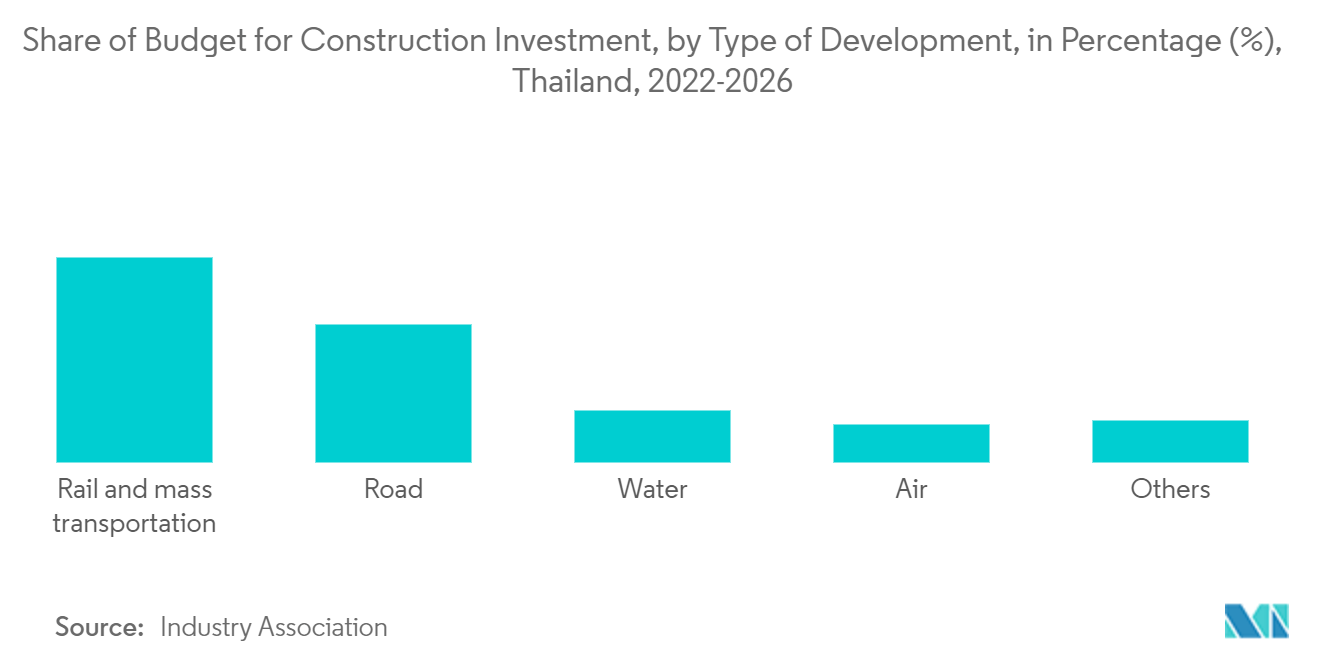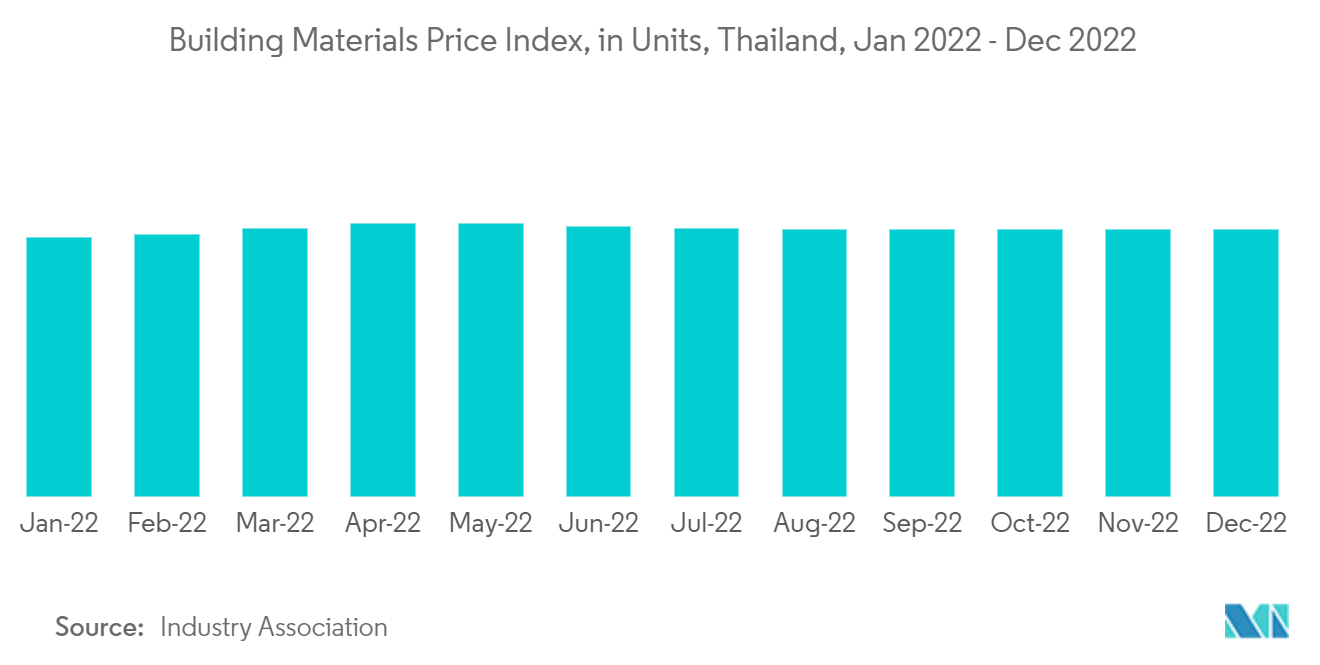Market Trends of Thailand Prefabricated Buildings Industry
This section covers the major market trends shaping the Thailand Prefabricated Buildings Market according to our research experts:
Construction Investment to Drive the Market Growth
During Q1 2022, the construction business contracted due to the impact of significantly higher costs because of the Russo-Ukrainian war that began in late February 2022. Consequently, the total value of construction investment in Q1 2022 stood at THB 340 billion (USD 10.37 billion) (decreased by 3.7% YoY), with public construction investment worth THB 210 billion (USD 6.40 billion) and private sector THB 130 billion (USD 3.96 billion) (decreased by 2.1% YoY and 6.1% YoY respectively). Contractors continued to face high oil and building materials prices from the impact of the Russo-Ukrainian War in 2022. However, it is expected that the construction business in Thailand will continue to grow during 2022-2024 in line with the expected overall construction investment value, driven primarily by large-scale investment in government projects. Particularly, the projects related to EEC and transportation route expansion, especially rail, and roads, as well as investment in private construction projects. Both the residential and commercial real estate segments are likely to gradually recover in line with economic conditions. Overall, the total construction investment value is expected to expand by an average rate of 4.5-5.5% in 2023-2024.
New project openings in residential construction are expected to increase by an average of 10.0% per year, or about 70 thousand units per year, during 2022-2024. This is supported by the expansion of the government's transportation network. Both the extension and motorway projects will connect suburban areas to downtown making travel faster. This will boost the residential construction around these networks. Condominium construction will improve in some areas, particularly the city center and some Skytrain routes. However, in 2023, overall construction investment may be delayed due to rising costs from oil and building materials prices. The construction of retail space is likely to expand in accordance with the developer's investment plan to support the recovery of private consumption and tourism sectors, and the construction of office buildings is expected to increase in line with the recovery of investment in the business sector. The commercial building construction projects will be characterized as mixed-use projects to support the modern lifestyle of urban society. The projects that are planned to be invested in the period 2022-2024, both under construction and about to begin construction have a combined area of about 1 million square meters. This growth in residential and commercial construction will drive the prefab buildings market growth in Thailand.

Rising Building Material Prices Can Negatively Impact the Market
The prices of self-built homes are projected to rise by 5-8%, spurred by rising metal and fuel costs in the wake of the war in Ukraine. Thailand's building materials price index reached 5.7% in 2022 compared to 2021, in line with higher global energy prices due to the Russia-Ukraine conflict, the reduction in production capacity of the world's major producers; Coupled with the rise in wages. Electricity and interest rate hikes, weak baht, and flooding at the end of Q3 and beginning of Q4 2022 resulted in high costs of raw materials, production costs, and transportation costs. But global demand for steel and steel products slowed as the key economies, including China, struggled in the real estate sector. As a result, Thailand's overall building materials index slowed in the second half of the year. Only in December 2022, the building materials price index was 119.4, down 0.2% compared to November 2022. The reason for the decline in the price index compared to November 2022 was due to the decrease in the price of steel and products, as well as the decrease in global market prices. But it was still up 3.6% compared to December 2021.
Since Russia began its invasion of Ukraine in 2022, metal prices have increased by 50%. Key construction materials and various metals account for some 20% of home building costs. As a result, the prices of self-built homes are expected to jump significantly. Housing prices will be no longer controlled as soaring home construction costs were also attributed to fuel prices which affect both transportation and manufacturing costs. The price will be more expensive by 10% or higher if labor wages also increase. Nickel, which makes up 20-30% of system works with components like electric wiring, has seen the highest surge, with prices rising 60%. Even though steel prices had already doubled in 2021, pricing for self-built homes remained stable, even during the outbreak. Demand would have dropped since then if the cost had risen. The ongoing war could reduce demand for self-built properties, as it has a significant impact on home construction prices and customer confidence. The self-built housing market, which had been dropping steadily since 2020 because of the pandemic, had only recently recovered in November 2021.

